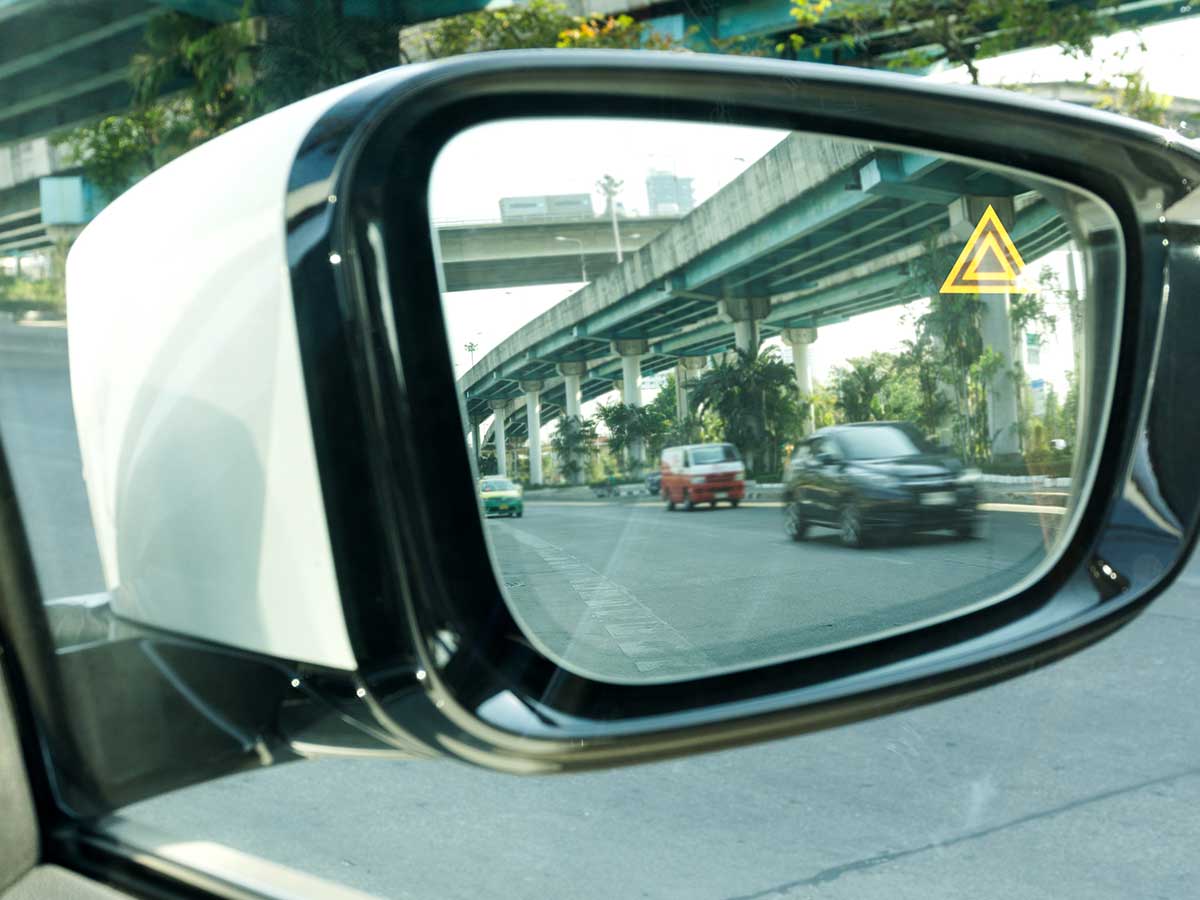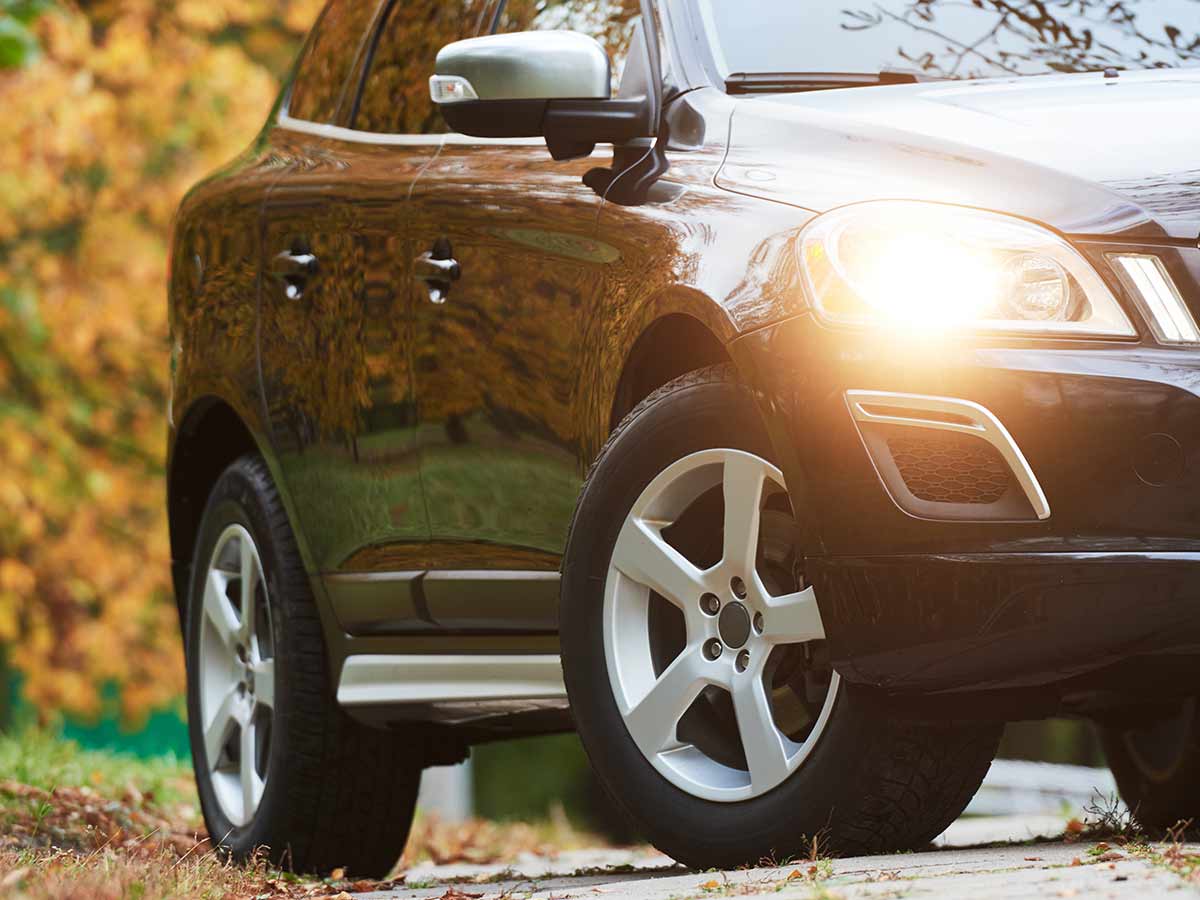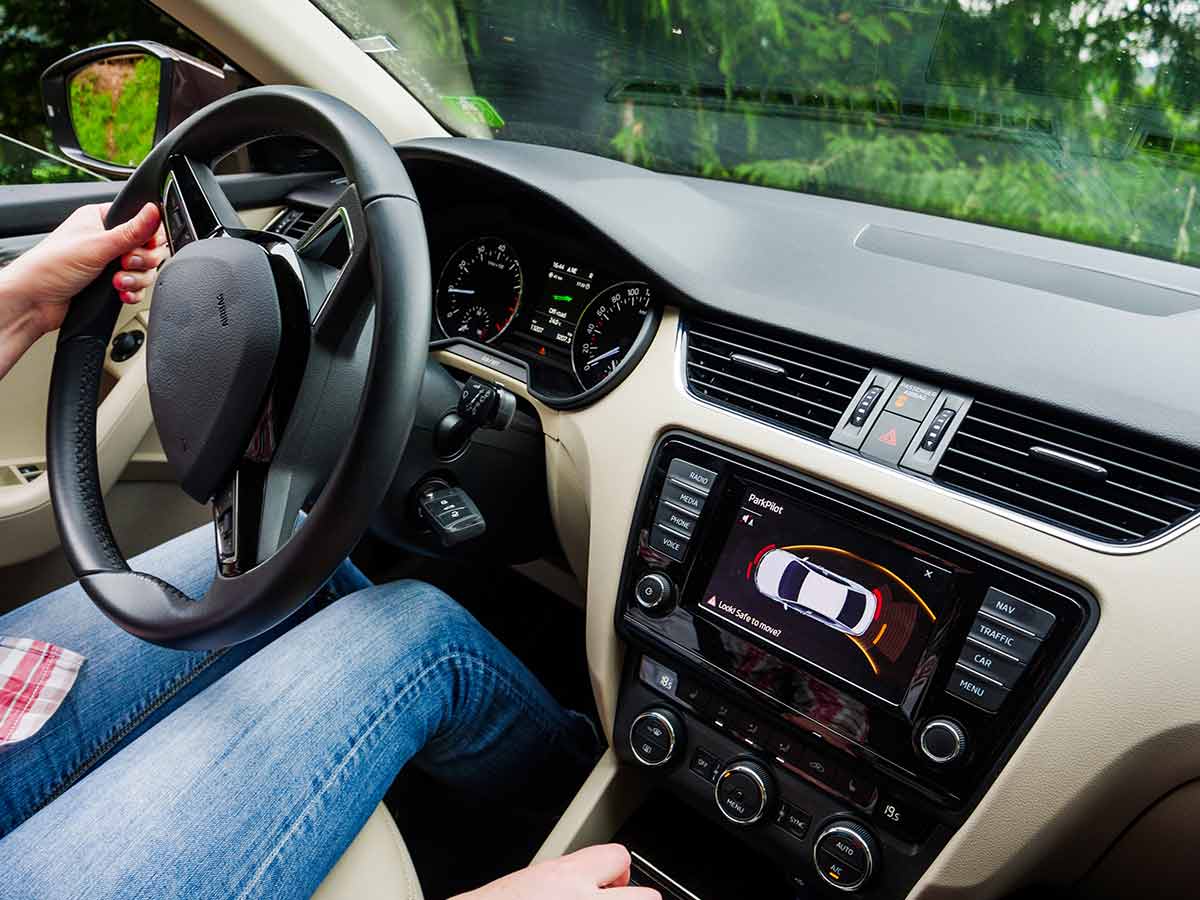Traffic Sign Recognition
Heads Up Display
Lane Departure Warning
Adaptive Cruise Control
Tire Pressure Monitoring System
Backup Camera

Using a rear-pointed camera, this feature is activated when the car is placed in reverse. Meant to aid in backing into or out of a parking space, this feature also helps detect pedestrians.
The backup camera was another feature that was previously just optional, but now it's a gold standard for new automobiles.
Blind Spot Monitoring

This feature uses sensors on either side of the car to detect cars, with the hope of preventing collision. Blind Spot Monitoring helps drivers be aware of their surroundings while on the road.
Some cars connect this feature with a camera view of the blindspot that appears on the driver dash display or the HUD.
Forward Collision Warning
High Beam Assist

Using sensors placed at the front of the vehicle, High Beam Assist senses cars approaching and automatically adjusts the headlights to be either high beams or low beams.
This safety feature is meant to prevent blinding oncoming traffic with high beams, helping to improve safety when driving at night.
Park Assist

With Park Assist, the vehicle can take control of the motor functions to aid the driver in parking situations.
By using a combination of cameras, sensors, and control over the steering wheel and speed, this feature parks the car while avoiding cars and other objects– all without the driver's help. It is most popularly used to aid drivers in parallel parking.
 Author
Ron Winkler
Last Updated: November 11, 2025
Author
Ron Winkler
Last Updated: November 11, 2025





